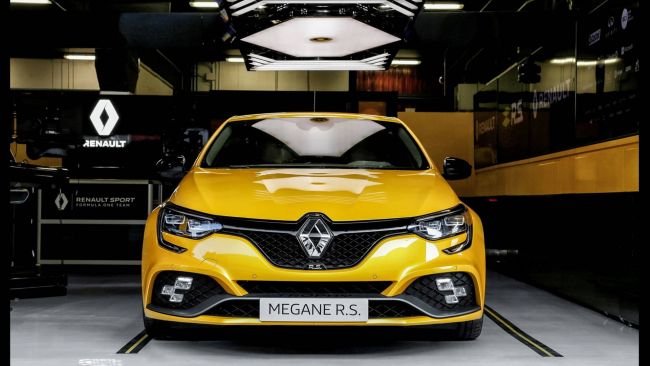
We drove: Renault Megane RS - maybe less less?
At first glance, it is difficult to answer this question, since we have not yet received information about how much it will cost at the international presentation, during which we also ran it on the asphalt of the Spanish circuit Jerez. Namely, the Megane RS has always been one of the cheapest cars of its kind and, of course, one of the fastest on the race track. Last but not least, its various versions have repeatedly set lap records at the famous Nurburgring Nordschleife, and the new RS cannot (yet?) Boast of that.
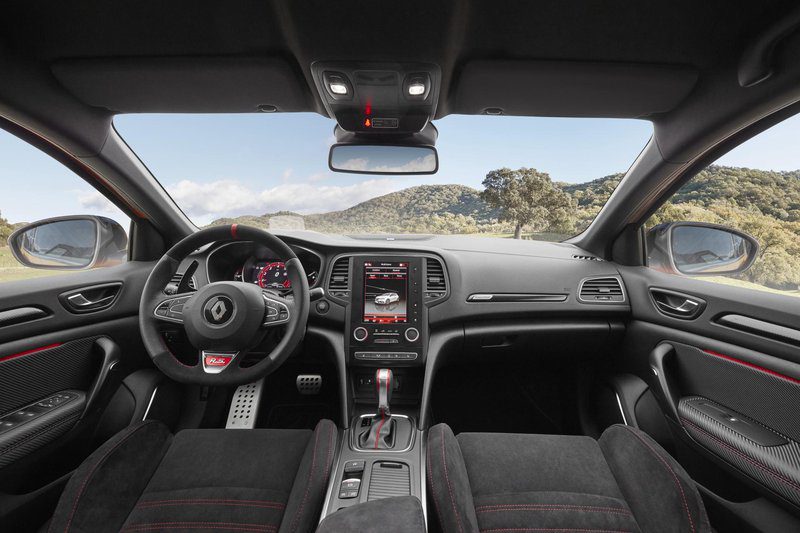
It is clear that he is not the strongest. Renault Sport decided (in the spirit of modernity) to reduce the engine size from two to 1,8 liters, but the power is slightly more than what the Megane RS has so far - 205 kilowatts or 280 instead of 275 horsepower ", since it was the most powerful version Trophy. But it is immediately worth noting that this is only the beginning: 205 kilowatts is the power of the base version of the Megane RS, which will receive another version of the Trophy for 20 “horses” at the end of the year, and it is likely that sooner or later they will even follow the versions marked Cup, R and the like - and, of course, even more powerful engines and even more extreme chassis settings.

The 1,8-liter engine has its roots in Nissan (its block derives from the latest generation 1,6-liter four-cylinder engine, which is also the basis of the Clia RS engine), and Renault Sport engineers added a new head with better cooling and more solid structure. There is also a new intake section, of course optimized for the use of a twin-scroll turbocharger, which is responsible not only for the abundance of torque at low speeds (390 Newton meters available from 2.400 rpm), but also for the continuous one. power supply from minimum speeds to the red field (otherwise the engine rotates up to seven thousand rpm). In addition, they added the surface treatment found in much more expensive cars to the engine and of course optimized it for sporty use in the electronics part. Last but not least, the Alpina A110 sports car is powered by much the same engine.
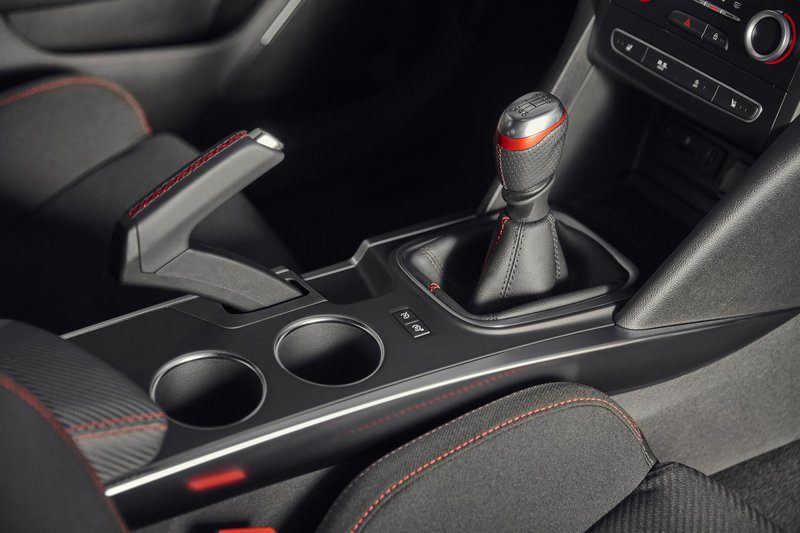
Welcome, but depending on the purpose of the vehicle, the side effect is reduced fuel consumption or emissions. Compared to its predecessor, it has decreased by about 10 percent, and the car has become faster, since it takes only 100 seconds to reach 5,8 kilometers per hour.
New for the Megana RS is also the dual-clutch transmission. It joins the classic six-speed manual we've become accustomed to, but it has six gears and some cool features, from starter to gear skipping - and its operation can be adjusted from the most comfortable to racing, firm and decisive. . Another interesting fact: if you opt for a manual transmission, you get a classic handbrake lever, and if it's a dual clutch, then only an electronic button.
The well-known Multi-Sense system takes care of adapting the car's behavior to the wishes of the driver, which, in addition to the gearbox, engine response and steering wheel, controls or adjusts the four-wheel steering system. The latter ensures that the rear wheels turn in the opposite direction to the front at lower speeds (for easier handling and responsiveness in corners up to 2,7 degrees) and at higher speeds in the same direction (for more stability in faster corners). , up to 1 degree). degree). The limit between operating modes is set at 60 kilometers per hour, and in Race mode - 100 kilometers per hour. The ESP stabilization system is also disabled at this time, and the driver can take full advantage of the Torsn mechanical limited-slip differential and the more powerful chassis in slower corners (yes, corners below this speed are slow, not fast). The former has a much wider operating range than its predecessor, as it runs at 25% off the gas (previously 30) and 45% (up from 35) under hard acceleration. When we add to that the Cup version's 10 percent stiffer chassis, it quickly turns out that track (or road) position is the new Megane RS's strongest asset.
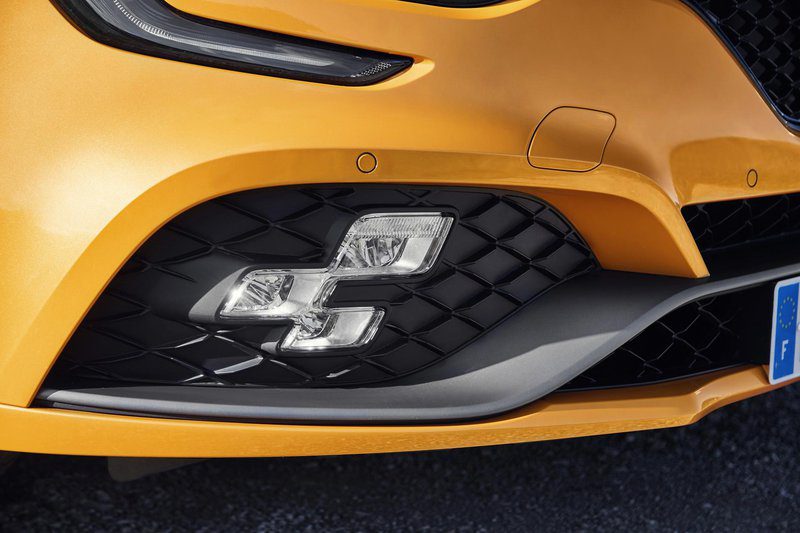
As before, the new Megane RS will be available with two chassis types (before even cooler versions arrive): Sport and Cup. The first one is a little softer and better suited for normal roads with a not quite patterned pattern, the second one - on the race track. That's one of the reasons it has the first electronic differential lock and the second includes the already mentioned Torsen - both of which include additional hydraulic dampers at the end of the chassis travel (instead of the classic rubber ones).
We tested the version with a sports chassis on open roads, not bad too, in the vicinity of Jerez, and it must be admitted that it fits perfectly into the family-sporty character (now only five-door) of the Megane RS. That's right to be athletic, but it also softens serious bumps well enough. Since it has softer springs, shock absorbers and stabilizers than the Cup chassis, it is also slightly more agile, the rear is easy to slide and is very controllable, so the car can be played with (and rely on the grip of the front tires) even on normal road. The Cup chassis is clearly stiffer (and just under 5 millimeters lower), the rear is less agile, and overall gives the car the feeling that it doesn't want to be playful, but a serious tool for great results on the race track.

The brakes are larger (now 355mm discs) and more powerful than the previous generation, and on the track it turned out that, like its predecessors, there was no need to worry about overheating or how it would affect their performance.
Of course, the Megane RS still has a lot of ancillary or safety equipment – from active cruise control to blind spot monitoring, automatic emergency braking, traffic sign recognition and automatic parking – despite being an athlete. The worst side of the new Megane RS is (of course) the R-Link infotainment system, which remains awkward, slow and visually dated. What is true, however, is that they have added an RS monitor system that not only displays race data, but also allows the driver to record their driving data and video footage from various sensors (speed, gear, steering wheel, 4Control system operation, etc.) . more and more).
Of course, the design of the Megane RS is also clearly separated from the rest of the Megane. It is 60 millimeters wider than the front fenders and 45 millimeters at the rear, it is 5 millimeters lower (compared to the Megane GT), and of course, the aerodynamic accessories are clearly visible at the front and rear. In addition, the standard RS Vision LED lights have a much wider range than the classic ones. Each consists of nine light blocks, divided into three groups (in the form of a checkered flag), which provide the inclusion of high and low beam, fog lights and direction of the cornering light.
Thus, the Megane RS makes it clear from the outside who it wants to be and what it is: an extremely fast, but still everyday (at least with a sports chassis) useful limousine, which is among the fastest cars in its class. At the moment. And if the Megane RS is as affordable as before (according to our estimates, it will be a little more expensive, but the price will still be slightly above 29 or below 30 thousand), then there is no need to fear for its success.
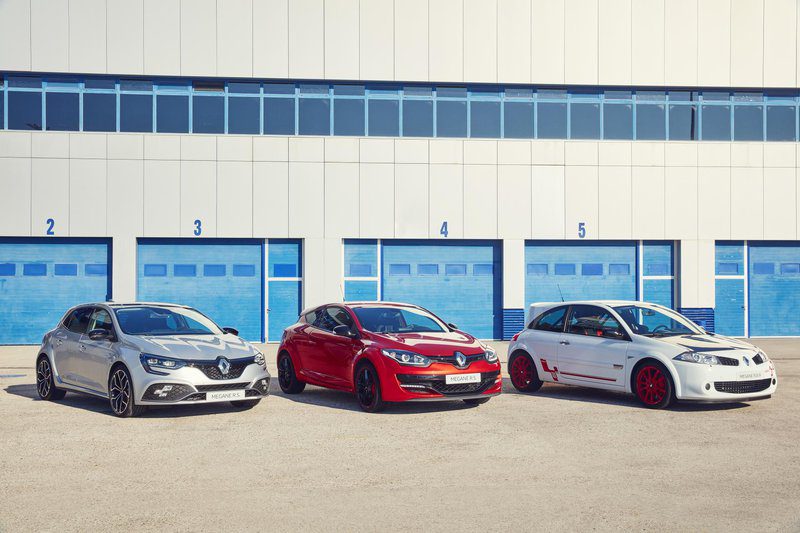
Fifteen years
This year the Megane RS celebrates its 15th anniversary. It was unveiled at the Frankfurt Motor Show in 2003 (it was the second generation Megane, the first did not have a sports version), it was capable of developing 225 horsepower and impressed mainly with the front axle, which provided excellent responsiveness and little influence on the steering. control. The second generation appeared on the roads in 2009, and the power increased to 250 "horsepower". Of course, both impressed with special versions, from the first version of the 2005 Trophy to the two-seater equipped with an R26.R roll cage, which was 100 kg lighter and set a record on the Nordschleif, and the second generation Trophy with 265 horses and versions Trophy 275 and Trophy-R, which set the North Loop record for Renault Sport for the third time.
Trophy? Of course!
Of course, the new Megane RS will also get more powerful and faster versions. First, at the end of this year (like the 2019 model year) the Trophy will have 220 kilowatts or 300 “horses” and a sharper chassis, but it is clear that there will be another version with the letter R. , and versions dedicated to Formula 1 , and some others, of course, with a few percent more powerful engine and a more extreme chassis. Wheels will be larger (19 inches) and iron/aluminum mix brakes will be standard, already on the Cup version's accessories list, which lighten every corner of the car by 1,8 kg. Whether this will be enough to set new records at the Nordschleife for production front-wheel drive cars remains to be seen. Even the (already motorized) competition is also unlikely to end.


